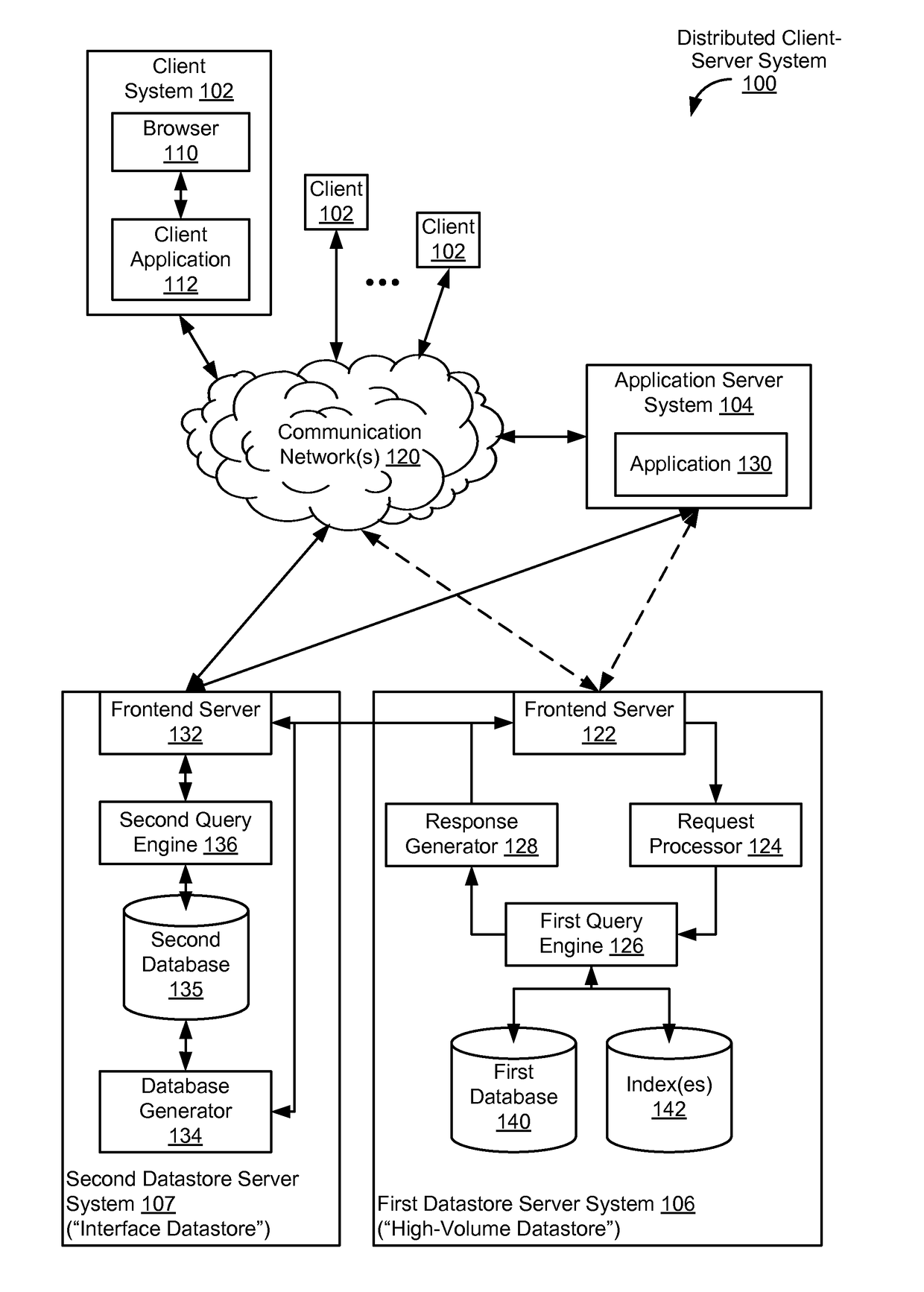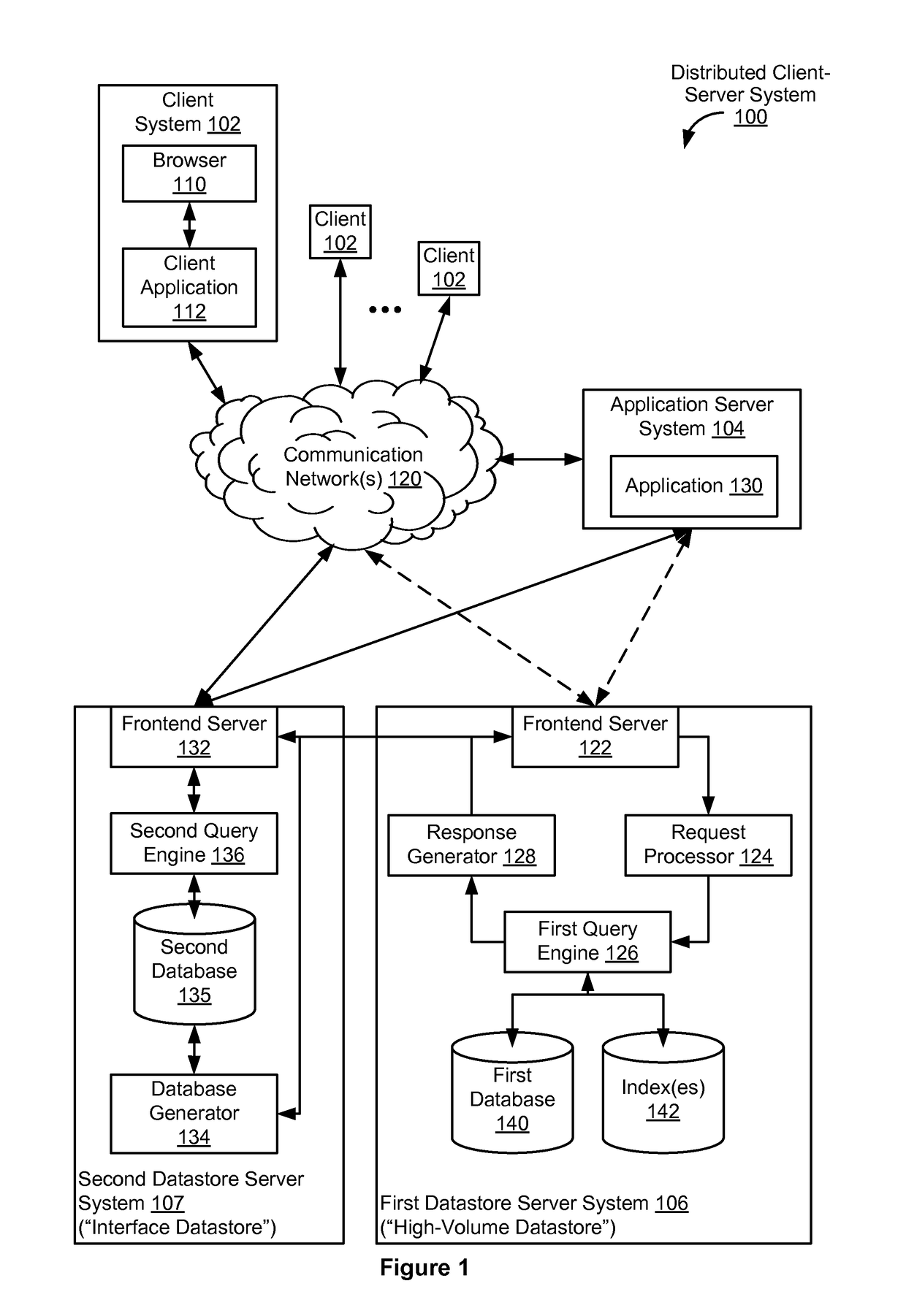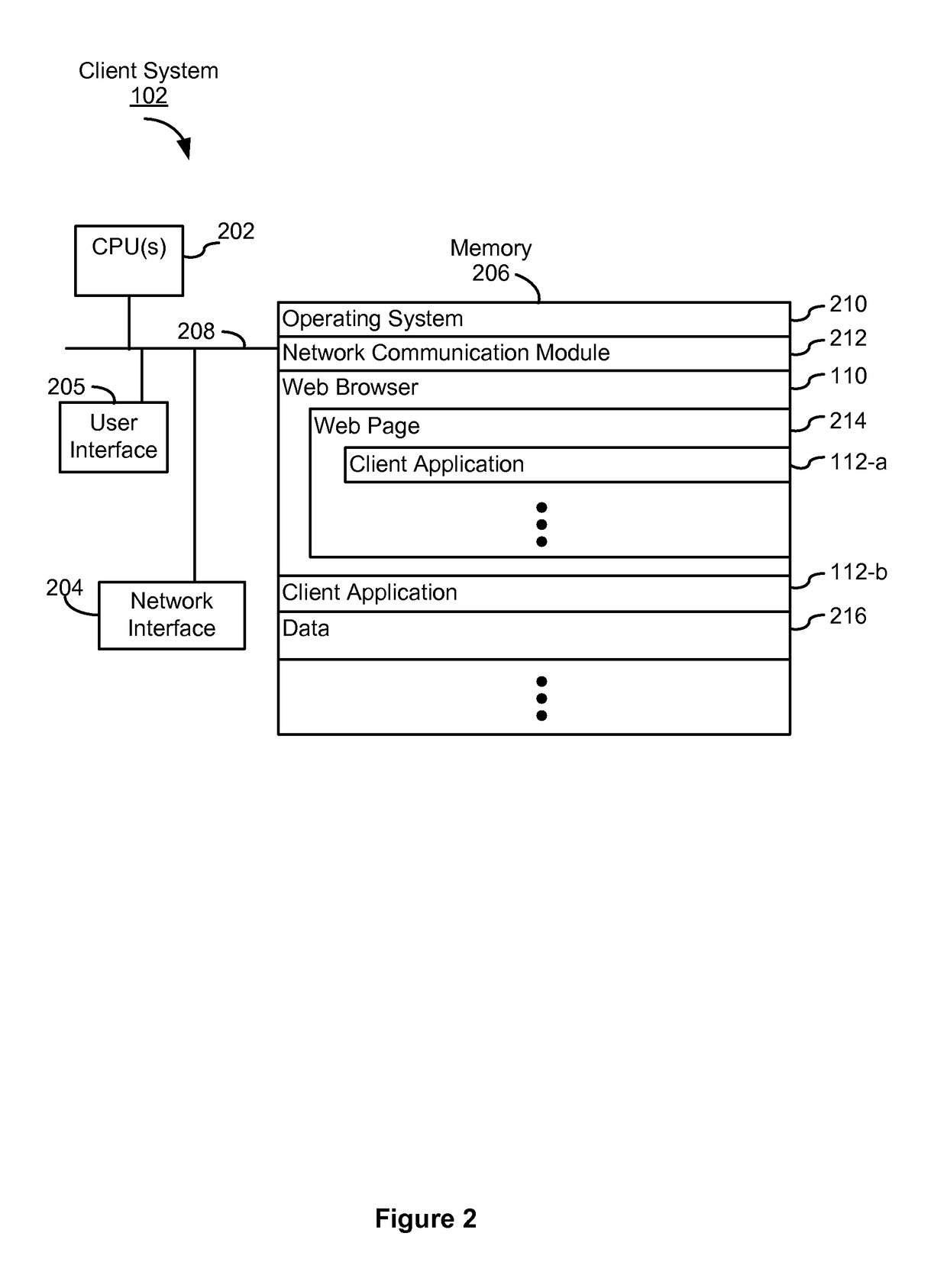Transmitting and receiving data between databases with different database processing capabilities
a technology of database and data, applied in the field of transmitting and receiving data between databases with different database processing capabilities, can solve the problems of limiting the types of queries that can be processed by the datastore server system, reducing and consuming resources, so as to improve the efficiency of query processing, improve the speed and efficiency of retrieving data, and reduce the flexibility of the datastor
- Summary
- Abstract
- Description
- Claims
- Application Information
AI Technical Summary
Benefits of technology
Problems solved by technology
Method used
Image
Examples
Embodiment Construction
[0021]It will also be understood that, although the terms “first,”“second,” etc. are used herein to describe various elements, these elements should not be limited by these terms. These terms are only used to distinguish one element from another. For example, a first entity could be termed a second entity, and, similarly, a second entity could be termed a first entity, without changing the meaning of the description, so long as all occurrences of the “first entity” are renamed consistently and all occurrences of the second entity are renamed consistently. The first entity and the second entity are both entities, but they are not the same entity.
[0022]The terminology used herein is for the purpose of describing particular embodiments only and is not intended to be limiting of the claims. As used in the description of the embodiments and the appended claims, the singular forms “a”, “an” and “the” are intended to include the plural forms as well, unless the context clearly indicates ot...
PUM
 Login to View More
Login to View More Abstract
Description
Claims
Application Information
 Login to View More
Login to View More - R&D
- Intellectual Property
- Life Sciences
- Materials
- Tech Scout
- Unparalleled Data Quality
- Higher Quality Content
- 60% Fewer Hallucinations
Browse by: Latest US Patents, China's latest patents, Technical Efficacy Thesaurus, Application Domain, Technology Topic, Popular Technical Reports.
© 2025 PatSnap. All rights reserved.Legal|Privacy policy|Modern Slavery Act Transparency Statement|Sitemap|About US| Contact US: help@patsnap.com



